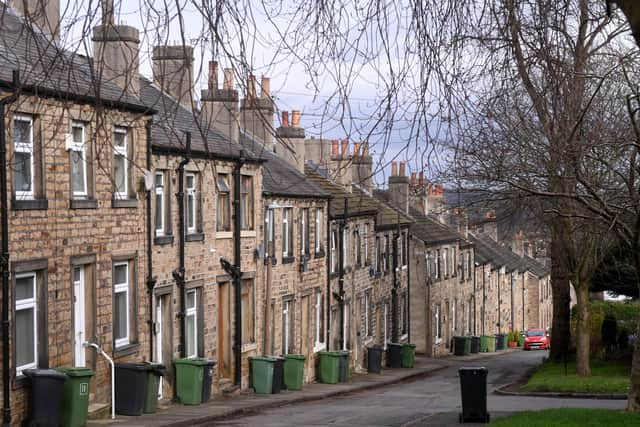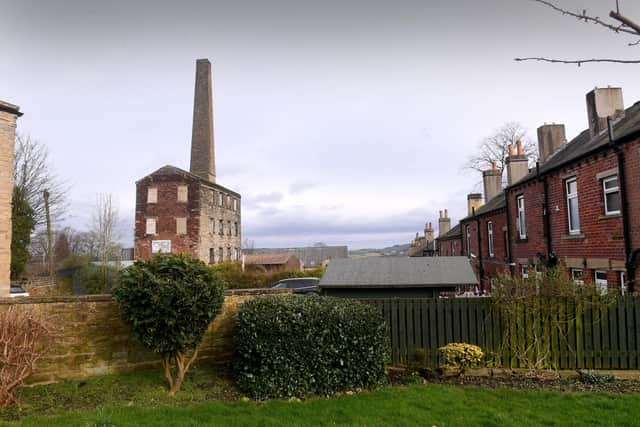Village of the Week: Almondbury is where Yorkshire spreads beneath you for miles
Proudly standing some thousand feet above sea-level and, from some vantages, seemingly standing on top of the world is a folly which was built to mark the Diamond Jubilee of Queen Victoria in 1897.
On a clear day, from this gem of a spot in the village of Almondbury, you can see Yorkshire spread out below you for who knows how many miles. It looks like infinity.
Advertisement
Hide AdAdvertisement
Hide AdThe folly, now Grade II listed, is built upon a hill known as Castle Hill or Almondbury Hill and while Queen Victoria’s reign was to end with her death just a few years later – the story of Almondbury and the folly site, actually started long before.


It is said that Almondbury was even considered of greater significance than Huddersfield, a town a couple of miles away that was at the heart of the industrial revolution and is even today remains the administrative centre and largest settlement in the Kirklees district.
Almondbury appears in the Domesday Book as "Almondeberie". Origins for the name may also have come from a Norse word for ‘all men’ being Almond and bury meaning a fortified hilltop settlement.
A charter was obtained in 1294 for a market in woollen cloth and each Monday, for the next 300 years, a market was held in the village, until the 1800s when Huddersfield began to overtake as the main centre for all things finance and business.
Advertisement
Hide AdAdvertisement
Hide AdWhile the earliest surviving record of the place name Huddersfield, or a derivation of it, is in the Domesday Book of 1086, Almondbury’s place in history goes back to the Neolithic period.


The first people to visit Castle Hill were probably hunters and gatherers of the Mesolithic (Middle Stone Age) period and camping amongst the forests which at that time covered the land.
In the Neolithic (final Stone Age) and Bronze Age (3300-1200BC), there was travel or trade along the river valleys connecting the Yorkshire Wolds, the Peak District and the Mersey and Ribble estuaries and has been shown by the discovery and characteristic of types of stone and bronze tools in places far from their points of origin.
After the Norman Conquest of 1066, Almondbury became part of the Honour of Pontefract, held by the de Laci family who built a small castle on the hill.
Advertisement
Hide AdAdvertisement
Hide AdIt was abandoned by the mid 1300s although some ruinous evidence remains.


After that it became a hotbed for political, religious, and other meetings. Working-class rallies for reform were held at least four times, in 1843 and 1848 and during the great weavers’ strike of 1883 a rally attracted up to 3,000 people, despite bitter weather, to listen to speeches by union leaders.
Word has it that, not to miss out on a good business opportunity, a pub was set up on the hill around 1810.
The site is still popular, as it seems is Almondbury, as the population of the village more than doubled according to census figures which show that in 2001, the population was 7,368 but was 18,346 by 2011.
It is easy to see why people might like it.


Advertisement
Hide AdAdvertisement
Hide AdThe views are not just to be witnessed from the top of Castle Hill, they are all over the village.
I am thinking Sharp Lane and Arkenley Lane in particular. As they wind upwards, the streets look out over lush fields and countryside.
And I mean lush, it seems very green. Maybe that is off set against the grey and sometimes industrial looking stone. But that is far as the gloom goes.
The houses are spectacular. They are individual. They are well north of a million.
Advertisement
Hide AdAdvertisement
Hide AdTraditional villas, cottages, 1970s sprawling bungalows, new build with a lot of glass to make the most of the views. Gated entrances, long driveways and turning circles lead to others that are hidden from view.
There is a pub in the village, The Woolpack and The Barn that is a restaurant with events.


On Westgate you’ll find a smattering of businesses amongst the traditional terraces that would have been in response to the West Yorkshire boom of the 19th and 20th century industries.
Other amenities include a library, medical centre, schools, cricket club and the like.
It doesn’t feel like nearly 20,000 people live here.
And be assured, the people that do are passionate about it.
Advertisement
Hide AdAdvertisement
Hide AdResidents have been left outraged by plans to bring nine new homes to a patch of land off Forest Road.
It was borderline as to whether Kirklees Council would recommend for approval and in a raft of letters sent to the council in objection, one described the plans as “disgusting” and said they were “appalled by the stupidity”. Another wrote: “I will be completely overlooked and lose privacy which will impact on my house value.”
The plans were approved by the council at a meeting last month despite pleas to the committee to turn down the application, describing it as a “tragedy” if the area were to lose Urban Green Space.
There is also sadness at the loss of the local Conservative Club.
Advertisement
Hide AdAdvertisement
Hide AdMarsh Conservative Club on Abb Street closed in February last year after becoming financially unviable and falling victim to “changes in culture” that have resulted in the demise of pubs and other similar social clubs.
A planning application has been submitted by the Bhullar Partnership for seven flats on the site of the vacant club, along with four car parking spaces and is set to be decided later this month.
At the time of the club’s closure, Almondbury ward councillor and former club member, Coun Bernard McGuin (Con) described Con clubs and similar venues as “something of a dying breed”.
He added: “Young people want flashing lights, loud music and some razzle-dazzle.”
